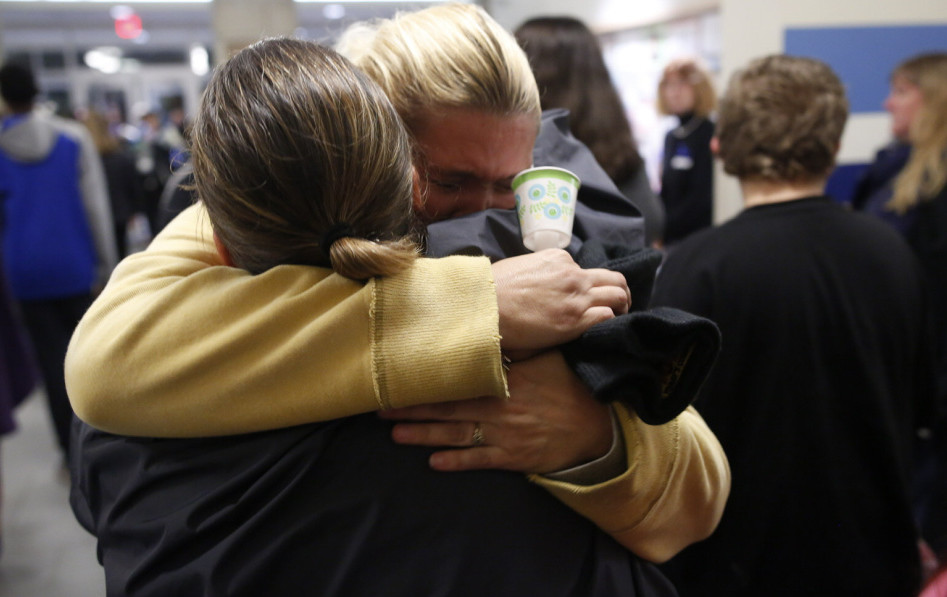About two weeks ago, a 13-year-old child was struck and killed in a crosswalk on his way to school. His name was Jayden Cho-Sargent, and he made a valiant attempt to walk from his home to Lewiston Middle School across a high-speed state road that bisects his neighborhood.
When pedestrians are struck and killed by motor vehicles, people cite weather, poor visibility or distracted driving. Any one of these factors might play a role. However, vehicular speed is almost always the reason that a collision between a car and a person results in death.
On most state roads running through the center of our communities, posted speeds are routinely in conflict with the design cues provided by the road. It actually feels uncomfortable to drive slowly. This mixed message between posted speed and street design is fundamentally unfair to all users of the road, and most unfortunately to pedestrians and cyclists.
DESIGN DEMANDS DRIVING FAST
Following multiple deaths of pedestrians and bicyclists on state roads within the past year, it’s time to assign the blame correctly and acknowledge the fundamental reason that people are being killed: speed related to road design that not just enables, but in fact demands driving fast. Streets designed to move cars quickly through community centers, with no regard for context, is a systemic problem that affects most communities in Maine.
Our local streets are treated as highway on-ramps, focused more on moving cars fast through city and small-town centers than on making streets safe for the people who live in these places. If we want to minimize future fatalities, every street that passes through a neighborhood, whether it’s a regional road or a local street, should be designed for slower-moving traffic and the safety of people on foot or on a bike.
There are many victims when a vehicle strikes and kills a pedestrian or cyclist. Blaming a motorist for driving fast on a wide road, or a cyclist for not wearing bright clothes, or a pedestrian for not being in a crosswalk is unproductive, misdirected blame.
Instead, each and every one of us, as residents of Maine, must stop tolerating loss of life on our streets and start addressing the root cause of the issue: dangerous, design-induced, high-speed traffic in the places where we live and work. Drivers, pedestrians and cyclists are systematically subjected to high-risk environments created by an unsafe and inappropriate proximity between fast-moving traffic and people. Fatalities will continue until we change the way the roads are designed.
On behalf of everyone who uses our state roads and local streets – drivers, pedestrians, people who ride their bikes for necessity or exercise, mothers, fathers, students, seniors – we declare a state of emergency. We can no longer tolerate high-speed streets in populated areas. We can do better. We know how to do better.
MAKE CHANGES NOW
We can no longer use lengthy three-, 10- or 20-year transportation funding cycles or limited budgetary resources as an excuse for inaction. We can make changes now – in the streets, within our communities, using existing, inexpensive and easy-to-procure resources. Every citizen can be a part of the solution, working with their local public works department and the Department of Transportation to use cones, paint, plastic bollards, even on-street parking to create safer streets.
Some will say it’s not safe to tamper with a road. However, people alter streets every day: when there is utility work, when there is an accident, when there is a construction project and extra space is needed for materials staging, or when a moving truck or delivery truck blocks a part of a lane.
And transportation departments across the country are increasingly using temporary materials not just for construction-related changes to traffic patterns, but also as a means to improve road performance or test ideas in real time, rather than relying on expensive engineering studies.
The idea that improving a street requires hundreds of thousands of dollars and long waits on the state funding list is increasingly outdated as more communities make incremental changes, using staff, contractors or volunteers to reallocate space with cheap, movable, temporary materials.
This isn’t just a technical issue – it’s also an awareness problem and a political decision.
We continue to allow dangerous high-speed traffic to flow unchecked through populated areas, when we know the risks. It is well known to policymakers, engineers and planners that pedestrian mortality increases when speed increases.
A pedestrian hit at 40 mph has an 85 percent chance of being killed, while a pedestrian hit at 20 mph has a 5 percent chance of being killed. Why, therefore, do we still prioritize mobility over the safety of people who are walking and biking? Building travel lanes over 10 feet in width on roads that run through our communities is not choosing human safety.
SAFETY OVER SPEED
Quite intentionally, we prioritize through traffic for commuters at the expense of streets designed for everyone, including people who can’t afford a car and need to walk to reach amenities, people who are no longer able to drive, people who are simply choosing a different way of life that doesn’t involve owning a car, and kids who walk to school.
The irony is that we can in fact have streets that both work well for mobility while also providing safe conditions for people walking and biking. But we must get serious about updating our thinking.
It is time to prioritize safety over speed. However, no one group can change the status quo. It will take a concerted, collaborative effort between councils and select boards, managers, public works directors, residents, engineers, regional transportation organizations and the Maine Department of Transportation.
Contact the people who make decisions about our transportation system – state legislators; the MDOT and Commissioner David Bernhardt; local selectpersons and city councilors; local road commissioners or public works directors – and tell them it’s time to slow our roads.
Send questions/comments to the editors.


